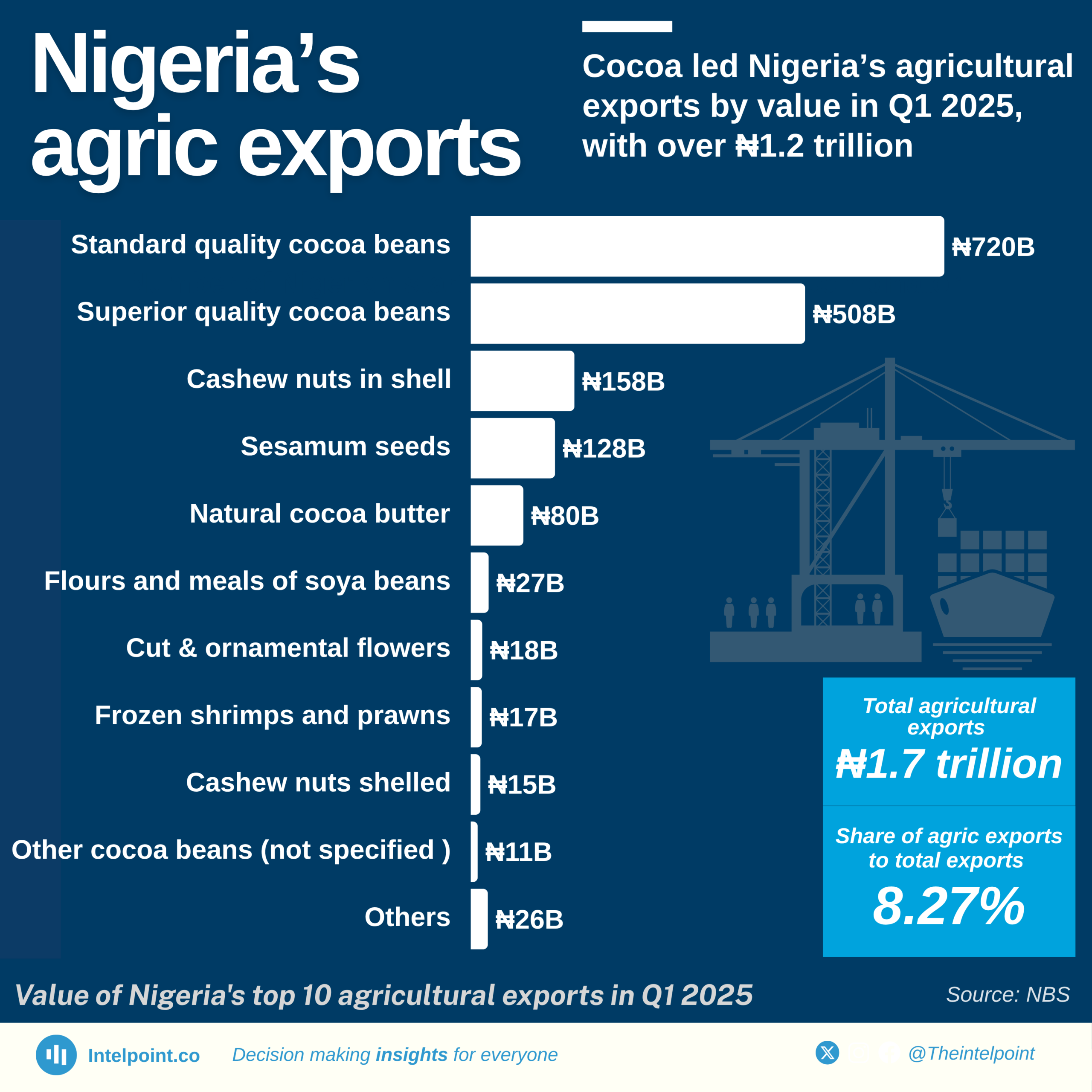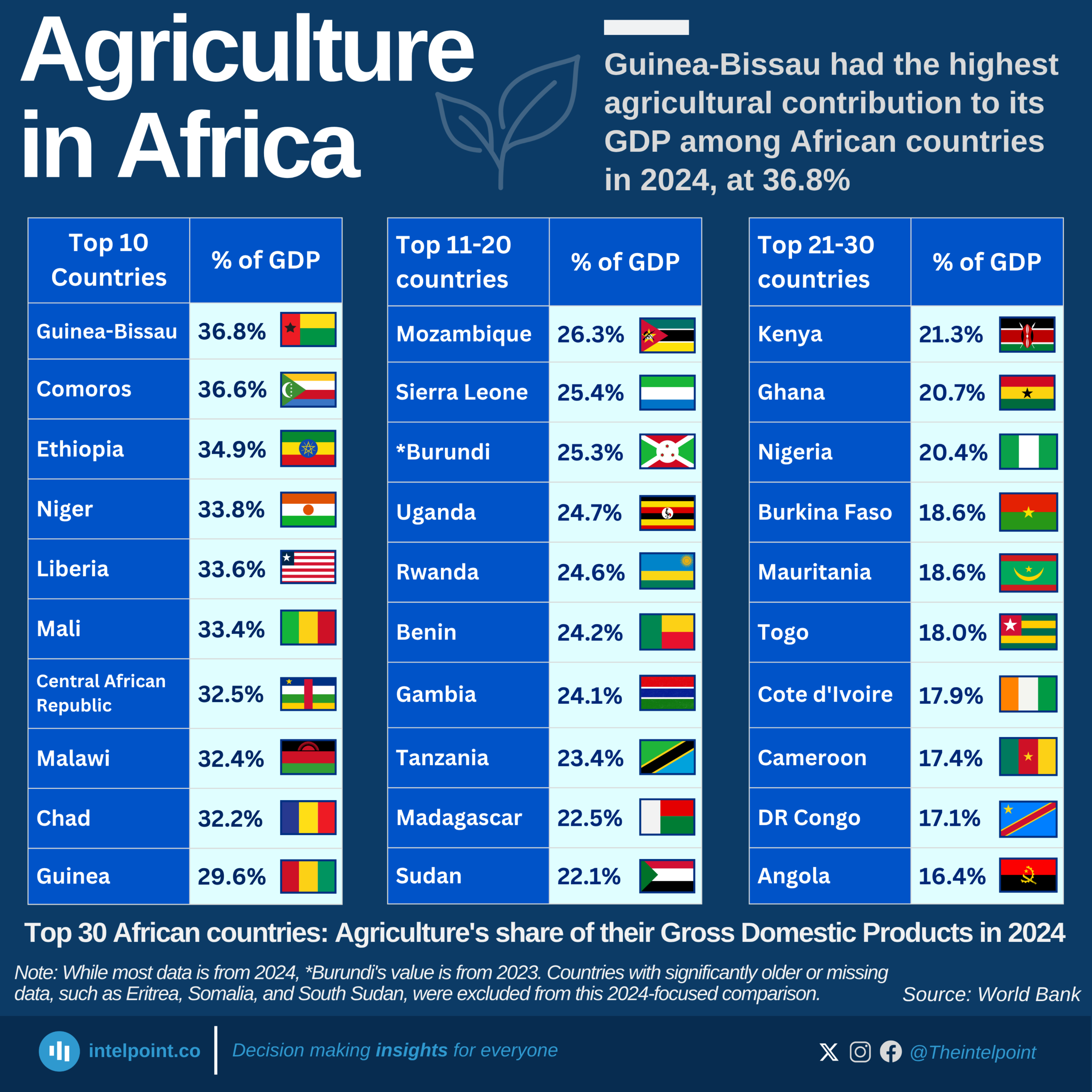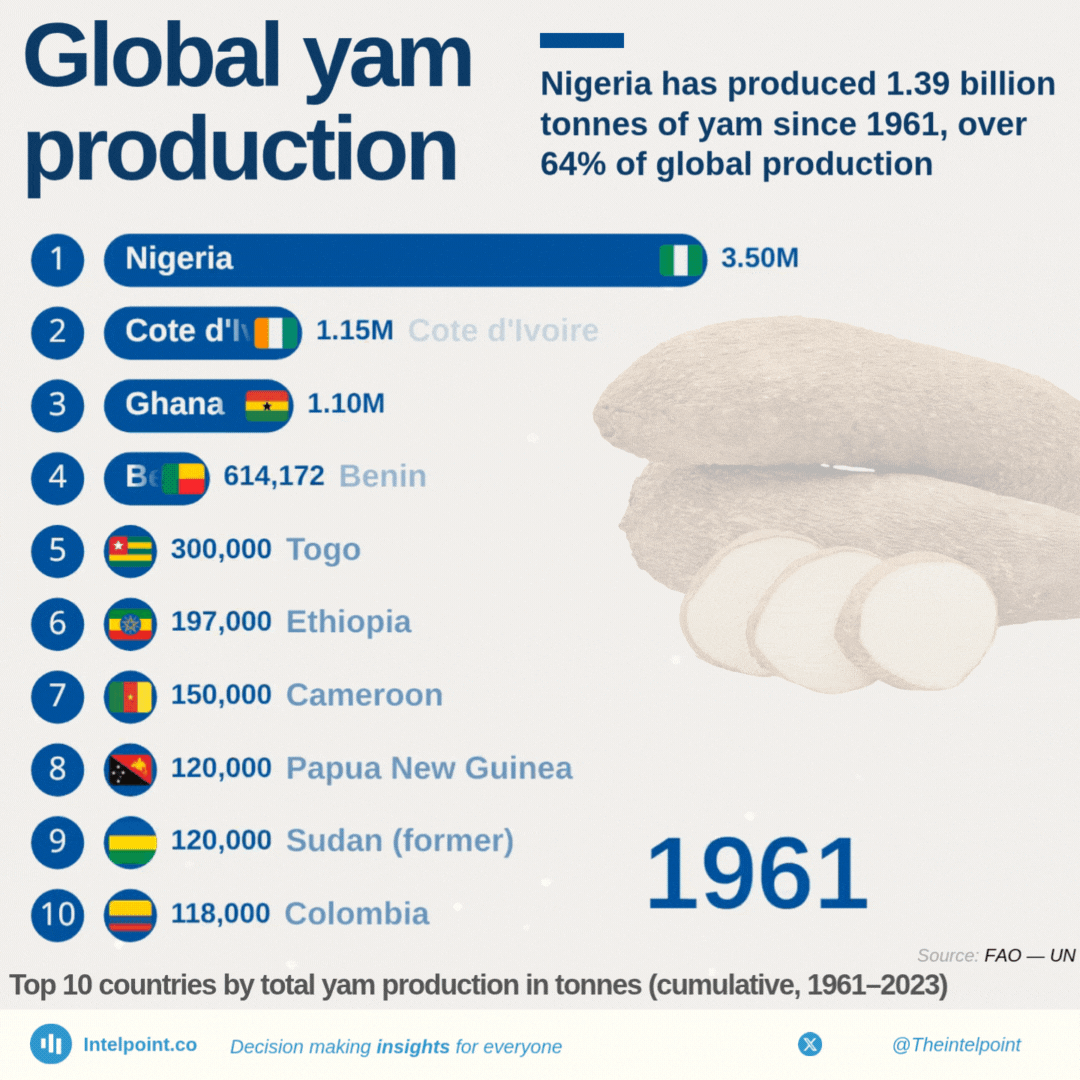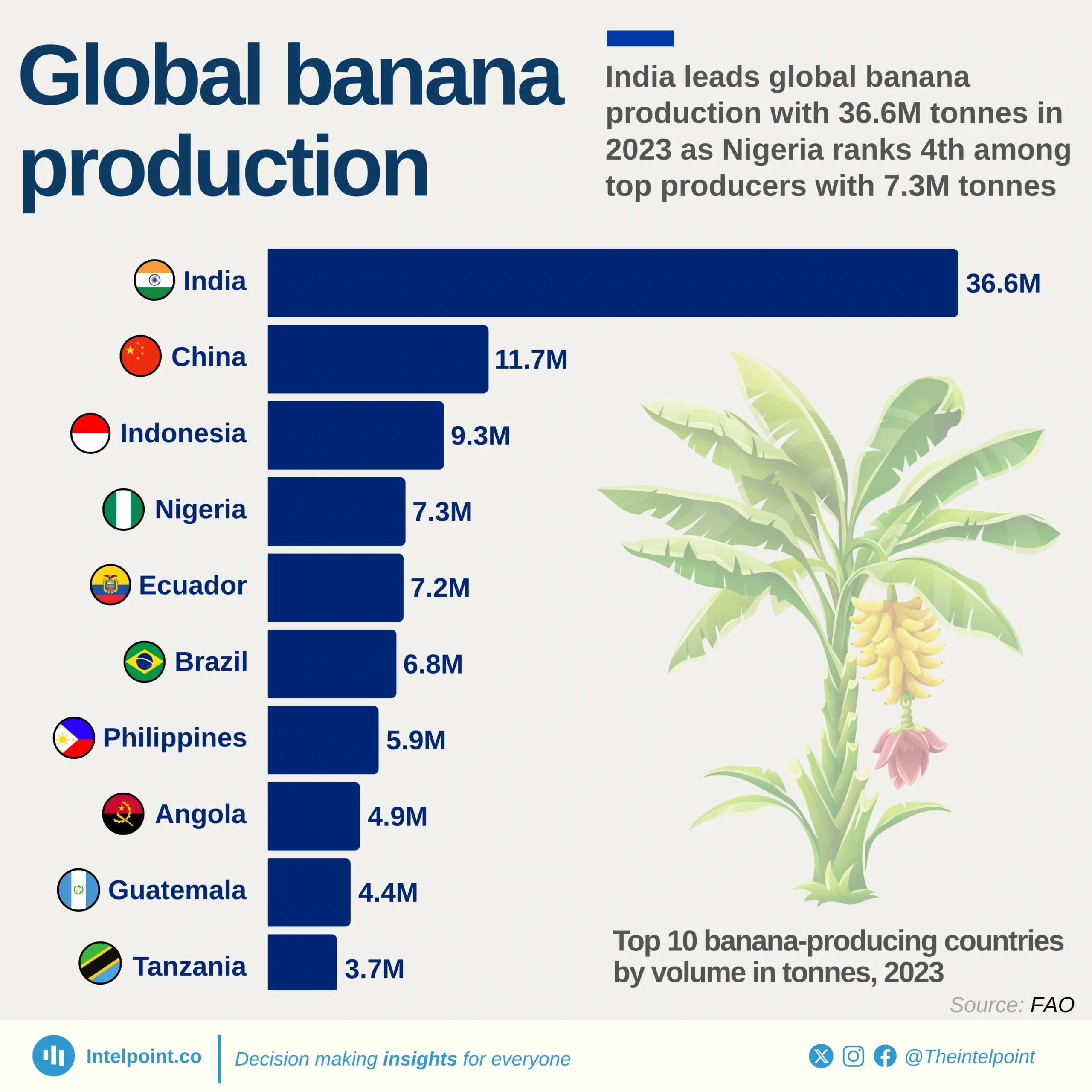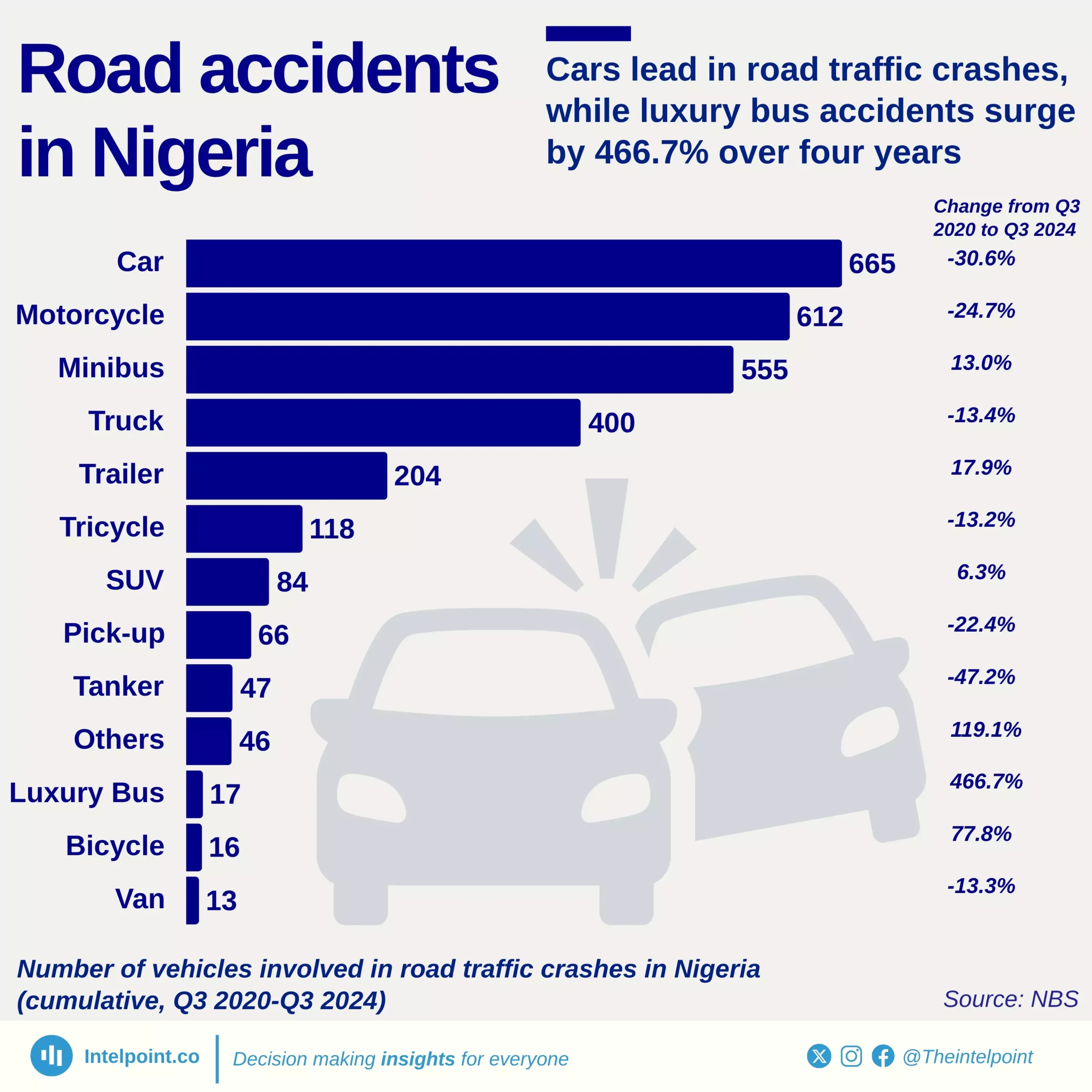The value of agricultural goods exported in Q1 2025 rose to ₦1.70 trillion, up 64.65% year-on-year and 10.63% quarter-on-quarter, highlighting continued growth in the sector.
Standard and superior cocoa beans led the chart, contributing a combined ₦1.23 trillion, with major buyers being The Netherlands (₦344.17B) and Belgium (₦203.17B).
Cashew nuts in shell earned ₦157.63B, mostly exported to India (₦87.56B) and Vietnam (₦69.74B). Sesamum seeds brought in ₦128.18B.
Soya bean flours and ornamental flowers fetched ₦27B and ₦18B respectively, showing Nigeria's export mix is broadening.
Nigeria's agricultural exports soared to ₦1.7 trillion (approximately $1.079 billion) in the first quarter of 2025, marking a significant 64.65% increase from Q1 2024. This impressive growth was largely driven by cocoa exports, which brought in over ₦1.2 trillion, primarily from standard and superior quality beans shipped to the Netherlands and Belgium.
Other strong performers included cashew nuts (₦158 billion) and sesamum seeds (₦128 billion). There was also notable growth in semi-processed goods like natural cocoa butter and soya flour. Additionally, non-traditional exports such as cut and ornamental flowers, along with frozen shrimps and prawns, showed increasing diversification, contributing to an expanding export base beyond a few core commodities.
This strong performance in Q1 2025 highlights Nigeria's growing momentum in the global agricultural market, signalling improved market penetration and a critical step toward economic diversification.
